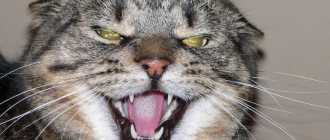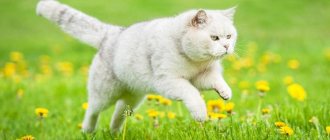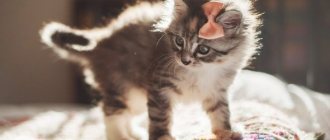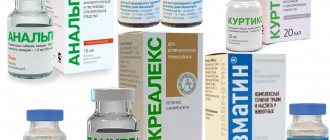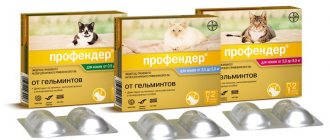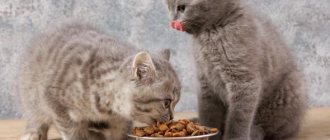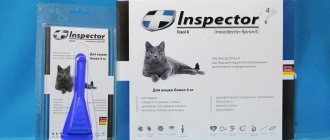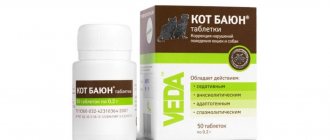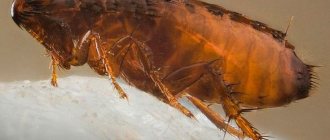A cat is in heat: how to cope
It would seem that getting a cat, not a cat, is the best solution. After all, there are fewer problems with her: she doesn’t ask to go outside, she doesn’t mark corners. The main misconception that an owner may encounter when choosing a cat for himself. And if you still intend to get a cat, you should prepare from the very first days for the fact that at a certain age she will go into heat. This is a natural process in the animal’s body, however, you need to prepare for it in advance. In this article, we told you what to do if your cat is walking, how to calm it down at home, what medications and folk remedies are suitable. You will also learn what methods of calming without drugs are available.
At what age do cats start “walking”?
As a rule, the first heat in cats begins at 6-11 months of age. It is difficult to give more precise dates, because it depends on many factors:
- season - the first heat begins closer to spring;
March cats are no joke. Increasing the duration of daylight hours encourages the onset of estrus. If the cat is six months old in the spring, you should expect the onset of estrus soon. If the same age falls in October-December, then the onset of estrus is more likely only next spring.
- Heredity;
In mixed breeds, the onset of the first heat is difficult to predict in advance, but among purebreds, patterns have already been identified.
The fastest maturing are the short-haired “oriental” breeds - Thai, Siamese, Burmese, Abyssinians, Bengals, Cornish Rex. On the other hand, cats of long-haired breeds sometimes begin to walk at 10-12 months and later - Persian, Maine Coon, Siberian.
Bengal cat. The first heat occurs at the age of 5-6 months.
- Type of temperament;
Some cats are more temperamental than others, and some, on the contrary, are late maturing.
- Physical condition;
In weakened individuals suffering from chronic diseases, this period begins later. Exhausted cats lacking vitamins and fats do not go into heat.
- Interactions with other individuals;
The presence of another cat in heat or an unneutered cat provokes the onset of heat in young teenage cats.
The maturation cycle of a cat during estrus:
Veterinarians divide this period into 4 phases:
Proestrus (precursor). Lasts 1-4 days. At this time, the hormonal background changes, and the first deviations in the animal’s behavior appear. The cat begins to cuddle, constantly asks for attention from the owner, rubs herself, rolls on the floor, but does not yet allow cats to come near her.
Estrus. Lasts 1-1.5 weeks. This is the peak of hormonal activity when slight clear discharge appears. The animal becomes uncontrollable: constantly meows loudly, arches strongly while stroking. She presses her chest to the floor, and puts her back up, as if inviting the male to mate.
Metestrus (after-leak). Lasts 2-19 days. If the cat manages to mate, pregnancy already occurs during this period (sometimes it can be false). Interest in males at this time gives way to pronounced aggression.
Anestrus (interestrus). The cat calms down completely. Behavioral signs of sexual activity disappear. Appetite and daily routine return to normal.
If during a period of high hormonal activity the cat failed to mate and, accordingly, there was no pregnancy, after some time the estrus repeats.
A cat's heat period
It will be impossible not to notice that the cat is in heat. Each owner can easily determine the moment when a cat starts estrus:
- Loud scream and purring of a cat.
- The appearance of marks throughout the home, which the cat makes during estrus, when she begins to have copious discharge.
- While the cat is walking, she stands in certain positions, which indicates a desire to mate with the cat. So, she begins to lower herself onto her front paws, while her croup will be raised and her tail will be moved to the side.
- Poor appetite. The animal may not eat well or completely lose its appetite.
- Frequent urination, uncharacteristic of the usual condition.
- Excessive affection. She will constantly curl around her owner's feet, the legs of tables, chairs and other objects, and purr loudly. There are times when an animal expresses its desire through aggression.
If these signs are present, we can confidently say that the cat wants a cat.
Operating principle
Gestrenol is classified as a bihormonal contraceptive, since the therapeutic effect is provided by 2 synthetic hormones - mepregenol propionate and ethinyl estradiol. The first component affects the cat's hypothalamic-pituitary system, which is responsible for the production of FSH (follicle-stimulating) and LH (luteinizing) hormones. These bioactive substances promote the development of follicles in the ovaries, the maturation of the egg and the onset of ovulation.
Mepregenol propionate blocks the secretion of these hormones by the pituitary gland in the cat's body. This component also reduces the concentration of testosterone in the blood of cats, weakens sexual reflexes and inhibits the development of sperm.
Ethinyl estradiol increases the viscosity of cervical mucus, which makes it difficult for sperm to penetrate the uterus. It also changes the inner lining of the uterus so that a fertilized egg cannot implant in it, so pregnancy does not occur.
The active components of Gestrenol enhance each other's action.
After taking drops or tablets, the active substances quickly penetrate into the blood through the intestinal walls. They are metabolized in the liver and excreted through the kidneys within 2 days.
Interesting! Gestrenol is a low-hazard drug (hazard class 4). This means that it does not cause negative reactions if the dosage is observed.
How often does heat occur?
This period occurs 3-4 times a year. The most common option for a cat that has already bred at least once is a constant estrus once every 3 months. However, if the cat has not yet walked, then your pet may be bothered by frequent estrus: monthly or even once every 2 weeks. If the heat has passed and your pet has not taken a walk, after 2-3 weeks everything can happen again.
If your cat has stopped estrus for a long time (more than a year) or, conversely, has a long, protracted estrus (more than 15 days), this is a serious problem and you should contact your veterinarian.
How quickly does heat return after giving birth?
About 64 days pass from the date of first mating to birth. Then the cat feeds the kittens; the duration of this period largely depends on the owners. 10-14 days after the end of lactation, estrus resumes.
But some lactating cats go into heat as early as two weeks after giving birth. If mating with the cat does not occur at this moment, then the cat begins to walk, as before, every 10-20 days.
Pregnant cat
Side effects of drugs
Flea drops for cats: remedy, tablets
Herbal medicines are harmless, but their action is aimed at eliminating neurological symptoms. They do not solve the problems of estrus, the cat continues to want a cat, and an unplanned pregnancy is possible. Sedatives cause lethargy, lethargy, and impaired coordination of movements.
Hormonal drugs quickly interrupt estrus, but have many side effects. Regular use of medications has an extremely negative effect on the cat's health. Every second case of cancer in old age is associated with the use of hormonal drugs. When using low-quality medications, the risk of complications doubles.
Side effects of medications containing hormones:
- mammary cancer;
- cancer of the uterus and its appendages;
- ovarian cysts, uterine fibroids, endometritis;
- purulent inflammation of the uterus (pyometra);
- severe hormonal imbalances;
- diabetes;
- obesity;
- alopecia;
- thyroid diseases;
- disorders of the digestive tract.
Serious diseases develop due to uncontrolled use of drugs and dosage violations. Hormonal contraceptives should be prescribed by a veterinarian. Independent purchase of cheap drugs: Anti-meow, Antisex for cats that do not have a state license increases the risk of developing unwanted complications.
Side effects of drugs
Medicines
Spring, time for love. This is where the sleepless nights of cat owners begin. Exhausted owners, tired of the cat’s constant, heart-rending screams, are looking for ways to calm the animal. What to do if your domestic cat goes on a spree?
The first thing that comes to mind is to calm the pet in a natural way and call the cat for help.
But, if you still don’t need offspring, and you need to calm the cat down, medications will help you. Before giving your pet medications, it is best to consult your veterinarian. Since each cat may have various contraindications.
Giving pills, giving injections or buying drops if the cat starts to go on a spree is a temporary measure that is under no circumstances recommended to be used on an ongoing basis.
There are two types of medications for cats during estrus:
- Hormonal. They can interrupt estrus, or significantly reduce its active phase and even delay the onset. Hormones are also used in case of unwanted pregnancy. They may well rip it off.
Among the hormonal drugs, the most famous are:
- Contra-Sex
- Sex barrier
- Cowinan
- Stop-Intimate.
They come in the form of injections, tablets, and suspensions. It cannot be used independently or systematically.
Hormonal agents
With the constant use of hormones, 70% of animals endure forced sterilization for medical reasons. It is much safer to deprive your pet of reproductive function soon after puberty.
- Sedatives. They do not affect estrus, they only correct behavior. With their help, you can quickly achieve inhibition of reactions and calm the nervous system. Often prepared from herbs.
- Kot-Bayun (extracts from plant materials: herbs oregano, sweet clover, motherwort, St. John's wort, ivy bud, catnip, thyme, marshweed, hill solyanka and lemon balm, rhizomes with valerian roots, hawthorn, hop cones, peppermint leaves);
- FITEX (valerian officinalis extract, motherwort extract, common hop extract, Baikal skullcap extract, glycerin and water);
- Stop stress (phenibut, complex of medicinal plant extracts: valerian rhizomes, catnip, motherwort, hops, Baikal skullcap).
Sedatives
Rules of application
Drops are not the only form of anti-party drugs. There are also tablets and injections. However, drops are the most convenient to use (unlike injections). In addition, drops are easier to feed than tablets.
How to give the drug to a cat? There are several methods:
- drip the product onto the root of the tongue;
- If the cat resists, you can mix the drops with food.
Something else interesting: Catnip is a natural, safe sedative for cats
The mode of application may also differ. In some cases, drops are used directly during estrus, in others, the drug is given in advance before the first symptoms appear. It is much safer for the cat to use the drops in advance. This is due to the fact that with preventive treatment, the dose of the drug is slightly smaller, and, accordingly, the effect on the pet’s body is less and the risk of side effects is lower.
Traditional methods of calming down during estrus
A cat is walking: how to calm it down at home? If you still don’t have any medicines at home, another way to calm the cat will help - traditional medicine.
Methods to help cope with “cat walking”:
- When the cat begins to have another attack of strong screaming, you can dip its butt in cool water and hold it in it for several minutes. Albeit not for long, but this measure will help calm down the wandering murka. You can do this every time the cat starts screaming loudly.
- To distract your cat from her heat, you can apply a small amount of butter to her face. As with the shower, the animal will be busy cleaning itself up for a long time afterward.
Behavior during estrus
- If a cat keeps you awake all night with its heart-rending screams, it is recommended that you forcefully pour 50 g of vodka into its mouth in the evening. An intoxicated and calm animal will sleep all night.
- For a day, a walking animal will be calmed by this recipe - crush ¼ tablet of Diphenhydramine and a whole tablet of valerian, mix the powders together and give to the cat. You can add a mixture of crushed drugs to food.
- Give your pet a decoction based on medicinal herbs that have a sedative effect. To prepare a decoction, you can use chamomile, mint or linden.
- A weak solution of vinegar is an effective, proven way to calm a walking cat to rest for a while. Dilute the vinegar with water to make a slightly sour-tasting liquid, and pour a small amount into the animal’s mouth.
Injections
The most dangerous and at the same time the most effective is the injection for estrus. The injection contains hormones that can relieve symptoms for up to six months. The wide range of possible side diseases makes this method one of the most rarely prescribed. Veterinarians usually take such measures only if the cat has an allergic reaction to anesthesia, and there is no other way to help the animal. Drugs that are injected into animals:
- Cowinan;
- Depo-provera.
How to calm a cat without drugs
The best solution is to distract your pet with music, toys, crumpled newspaper (anything that rustles or rattles will do), pay more attention to her, and also change her diet. Let's look at each method.
Music therapy
Classics (Mozart, Bach, Beethoven, etc.) are suitable as a sedative. The sound of a piano or violin has a beneficial effect on the animal's nervous system.
Changing your diet
During the entire period of estrus, you need to control your diet - if the cat refuses to eat, you cannot force feed it. Food should be served in small portions, the menu should be varied and healthy. In order to somehow interest the cat and at the same time distract her from the torment of estrus, you can pamper her with various delicacies and goodies.
Insulation
There are cases when the proximity of people only aggravates all the problems that exist during estrus. Then it would be advisable to temporarily isolate the pet in a separate room, where it will be left to its own devices.
Isolating a cat in a dark room without access to daylight leads to the production of melatonin, which will lead to the cessation of estrus.
Composition and properties of the drug
The drug Gestrenol is presented in the form of drops and tablets. Each form of medication contains 2 versions for females and males, which differ in the content of active components.
Composition of Gestrenol drops:
- mepregenol propionate (gestagen analogue);
- ethinyl estradiol (estrogen analogue);
- soybean oil;
- peppermint essential oil.
The first 2 components of the drops are active and provide a therapeutic effect. These substances inhibit sexual arousal in cats and delay estrus.
Interesting! Gestrenol drops help prevent fertilization in cats. This effect is realized if the drug is given to the animal within 24 hours after mating.
The medication helps calm the cat during sexual arousal. After its use, aggression disappears and the male stops marking the territory.
In appearance, it is a transparent solution of a yellow or yellow-green hue with a characteristic aroma. It is packaged in plastic bottles of different volumes (1.5 and 2 ml). The bottle has a dispenser attachment, which is closed with a screw cap with first opening control. Each bottle is packaged in a separate blister and cardboard box along with instructions.
Drops for cats contain the following dosages of the main components in 1 ml: 1.5 mg of mepregenol propionate and 0.015 mg of ethinyl estradiol. The solution for cats contains 4 mg and 0.2 mg of these substances.
The tablets contain the following components:
- mepregenol propionate;
- ethinyl estradiol;
- lactose;
- potato starch;
- calcium stearate;
- mint essential oil.
White or grayish tablets are packaged in blisters of 5 or 10 pieces. They are placed in cardboard packaging with instructions for use.
The dosage of the active components of the drug for cats in 1 tablet (0.1 g) is 0.15 mg mepregenol propionate and 0.0015 mg ethinyl estradiol, for cats – 0.4 mg and 0.02 mg.
The drug for females is packaged in a box with a pink stripe, and for males - with a blue stripe.
Mixing with a cat
The first mating is carried out on the third menstruation, when the pet has reached physiological maturity. This reduces the risk of miscarriages, infertility and other complications.
Before meeting her partner, the “bride” is vaccinated and dewormed. Her nails are trimmed and a set of personal items is collected that she will need while away from home. Mating is carried out on the male's territory to reduce his excitement.
The animals are left alone for several days to repeat cages many times. This consolidates the result, increasing the chances of successful fertilization. Help from the owners is required only in cases of aggressive behavior, discrepancies in the size of the partners, and the cat falling on its side.
Mating of purebred cats
If you are breeding purebred cats, you need to know exactly the time and period of mating. For example, the period of puberty in the British and exotic folds begins in the period from 7 to 9 months. If mating is carried out earlier, pregnancy for a cat can result in many complications.
British mating
Facilitate sexual desire without the use of drugs
During sexual heat, pets can be very annoying, however, it is worth remembering that this is also stress for them. If your pet is not a breeding dog, then it makes sense not to torture her and sterilize her . However, there are small tricks with which you can calm your pet during heat. No medications needed for this:
- Try to distract her, for example, with active games. If she likes to chase a toy mouse, give her that opportunity. It is likely that after playing enough, the animal will lie down to rest.
- Change your diet, give him a little food at a time. This will help improve the general condition of the body and normalize digestion.
- Affection and attention. Pet the cat, but only on the face. If you touch your back or croup, this will provoke increased sexual desire.
- If possible, do not allow your cat to rest during the day. Then at night, she will rest with you.
- Taking a bath with warm water will calm your cat for a couple of hours. The pet will be busy licking its fur.
The methods listed above will not harm your pet in any way. But unfortunately, they do not always have the desired effect. In this case, only drugs that are specially created for animals during the period of sexual desire remain.
© shutterstock
Does a cat walk after sterilization?
The most radical and effective way to calm a cat is to sterilize it. Doctors recommend that the procedure be carried out as early as possible for the health of the pet. A cat at a young age tolerates anesthesia more easily. The recovery period is short - within a few weeks you will forget about a trip to the veterinary clinic.
There are two types of operations:
- Sterilization. It involves limiting reproductive functions by simply ligating the fallopian tubes. It is important to understand that the ovaries remain in place and continue to produce hormones. This means that the cat will come into heat at a natural time. The symptoms will be the same as before the operation. The only plus is that she will no longer bring kittens.
- Castration. As a result, the animal is left without reproductive organs. It can be partial, when only the ovaries are cut out, and complete, when the uterus is also deprived. The latter option guarantees the absence of possible complications in the future. In general, this is the surest calming method for cats.
The main advantage of the operation is a 100% guarantee of no relapse. If you decide to castrate, you can be sure that your cat will never lose her head in love again in her life.
Cat after sterilization
Antisex for cats
Antisex is an easy-to-use, effective veterinary drug for regulating the reproductive cycle in cats. It can be of plant or hormonal origin. The medicine is a liquid with an oily consistency and a light yellow color. Available in the form of pipette tubes, in glass bottles.
Antisex drops for cats
The hormonal drug suppresses the sexual desire of cats, corrects the behavior of furry purrs during estrus, suppresses the production of sex hormones, which leads to the suppression of estrus. “Antisex” is a harmless veterinary drug that is well absorbed and quickly eliminated from the body of animals.
To delay estrus, cats are given three drops once a day for 7-14 days in a row. During estrus, to suppress it, take three drops daily until it completely ends. It is not recommended to conduct more than two intensive courses of “anti-sex therapy” per year. Do not use for more than 18 months in a row.
